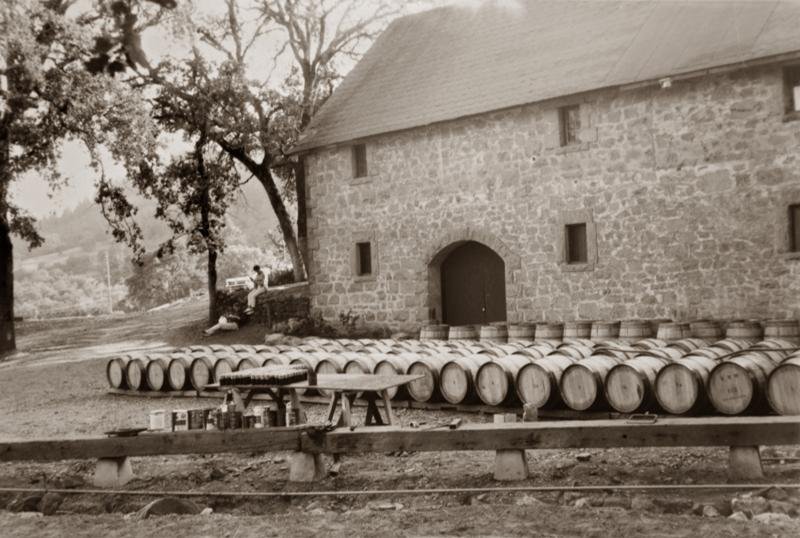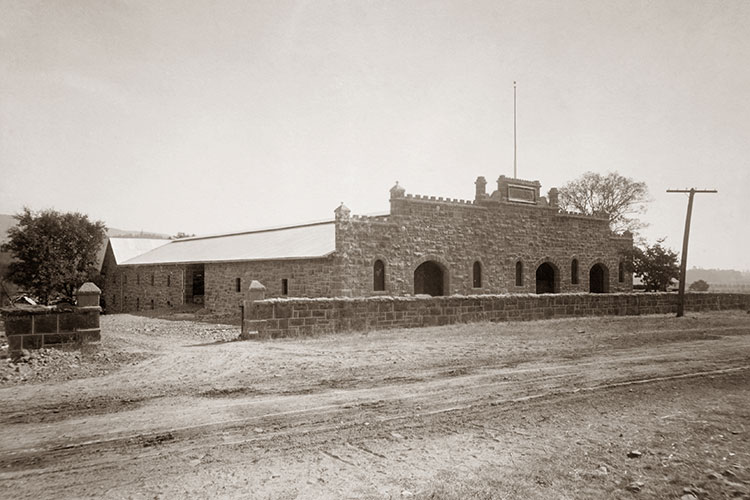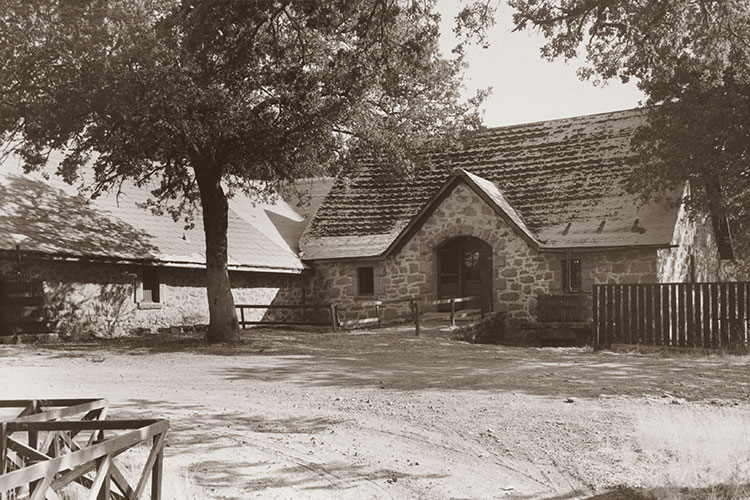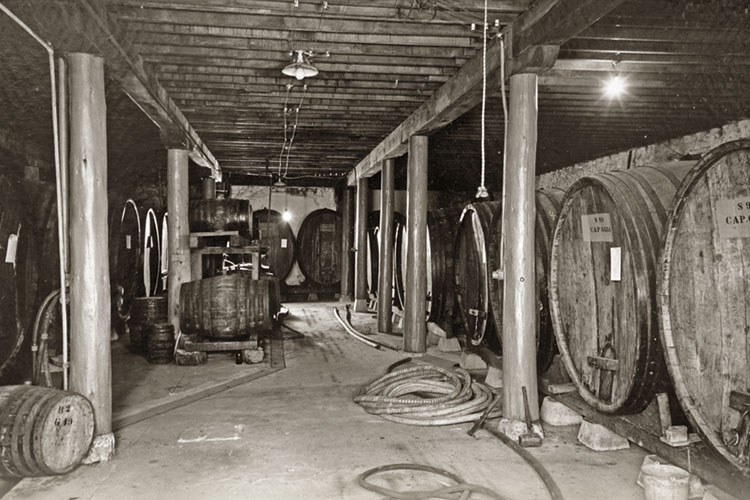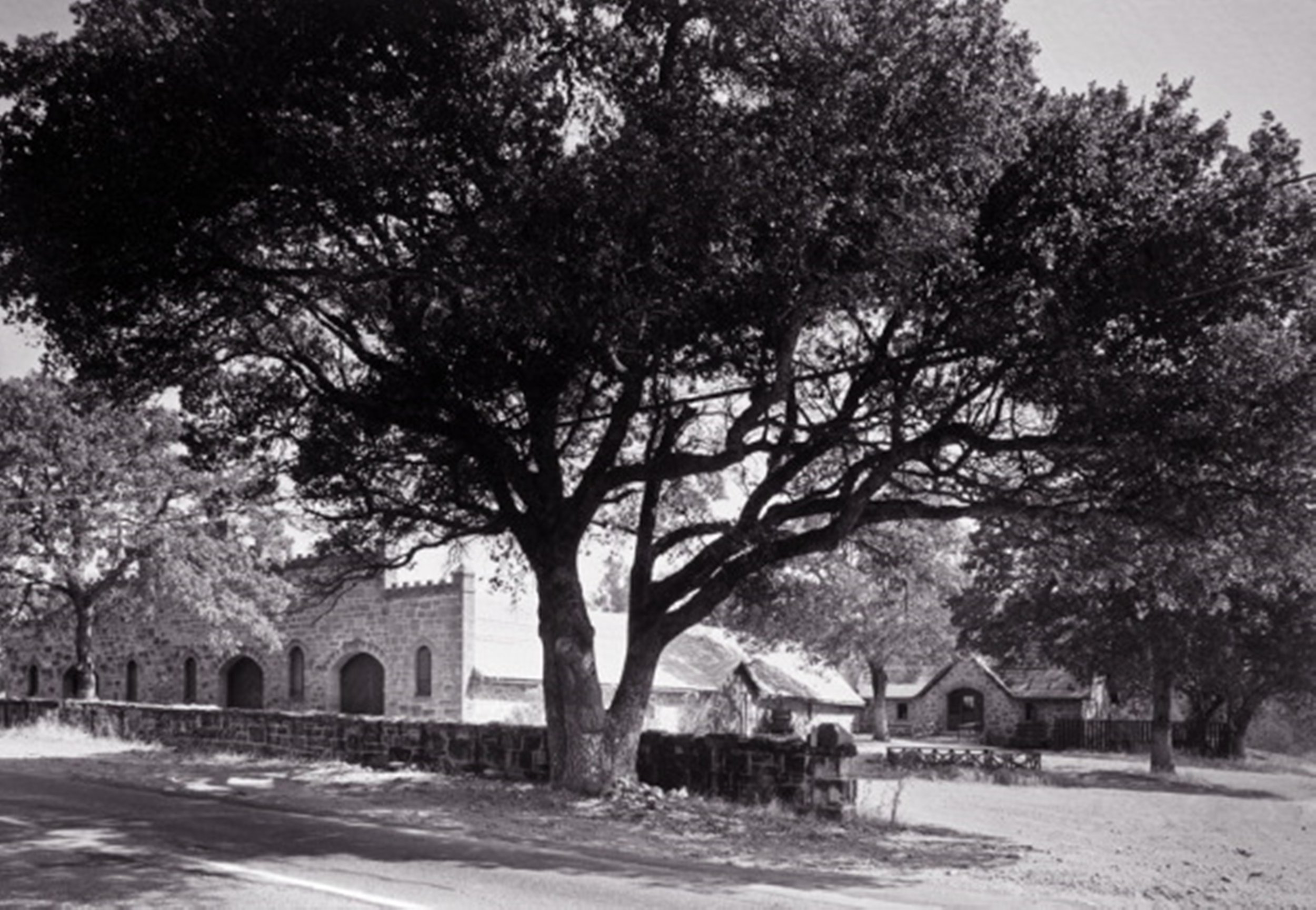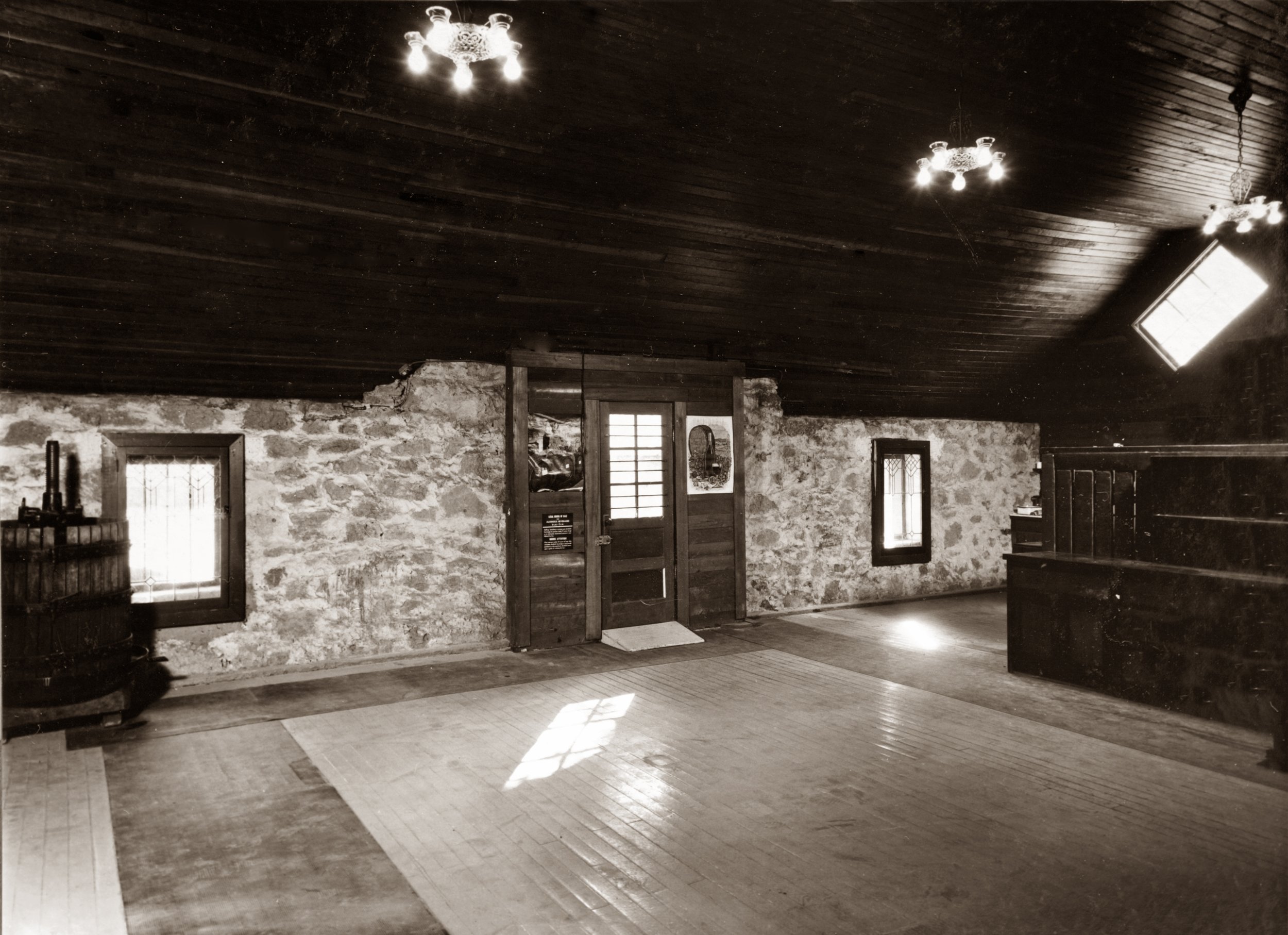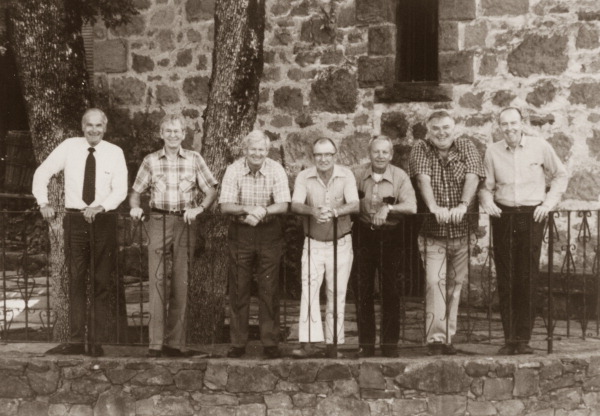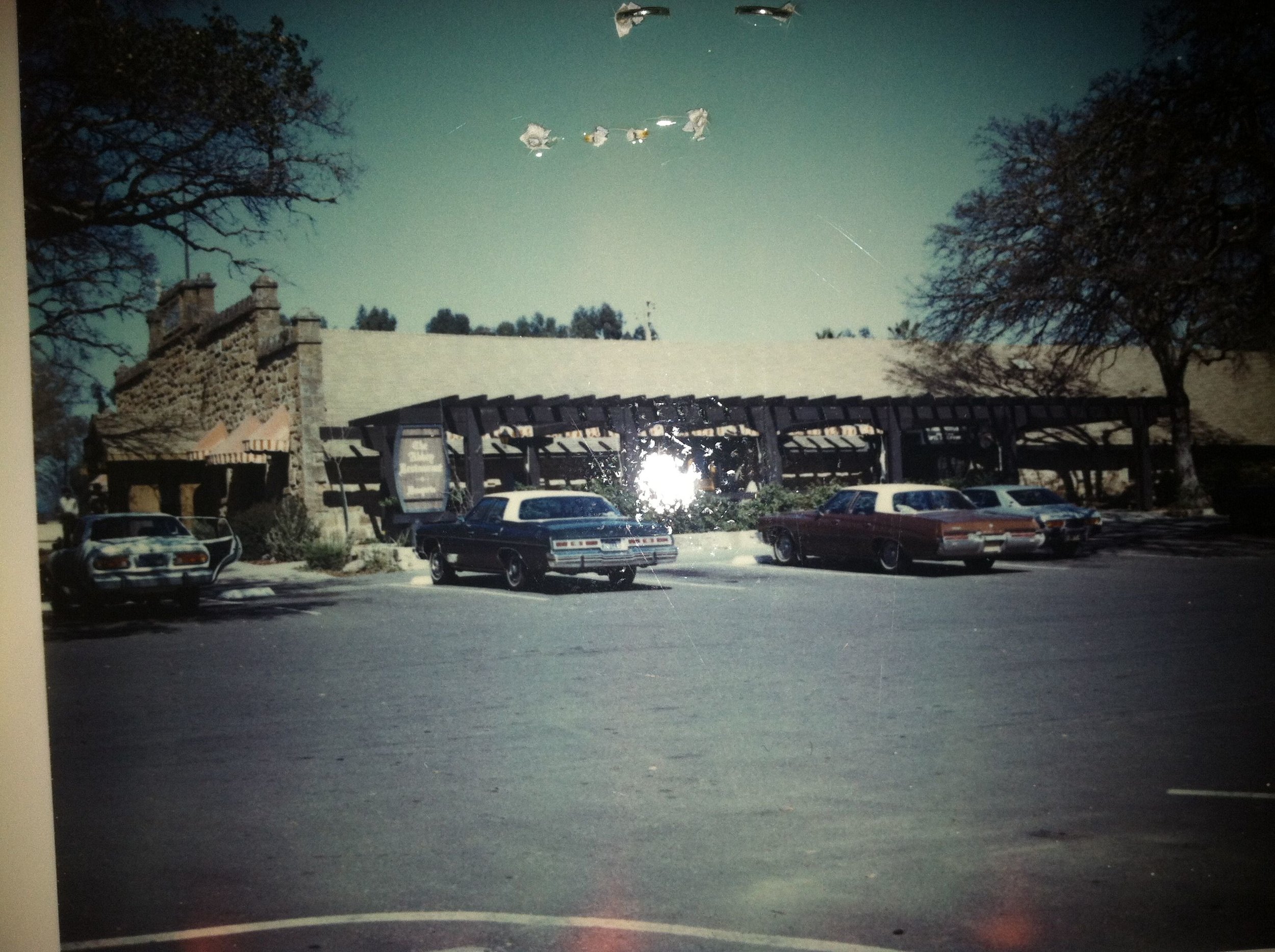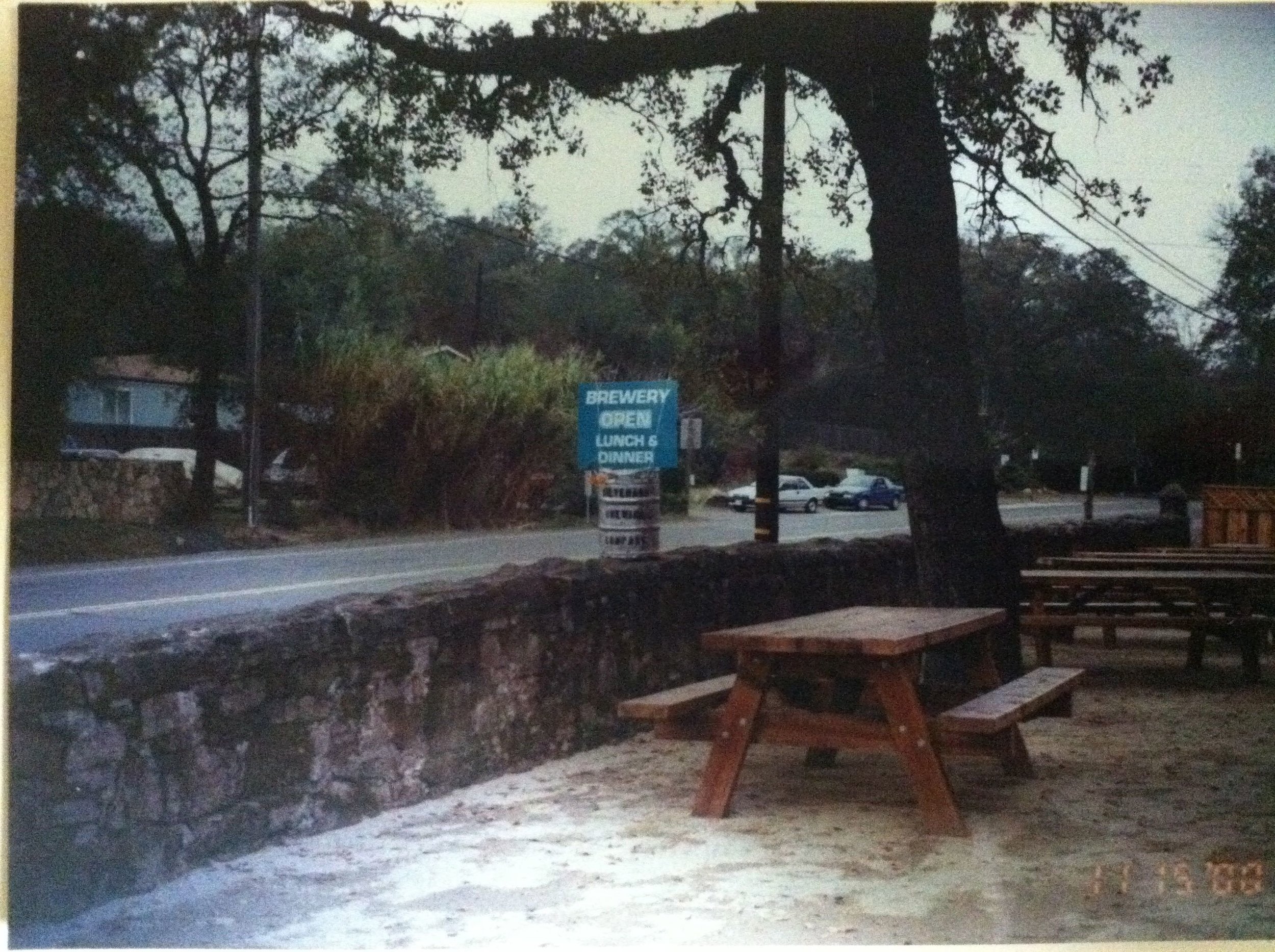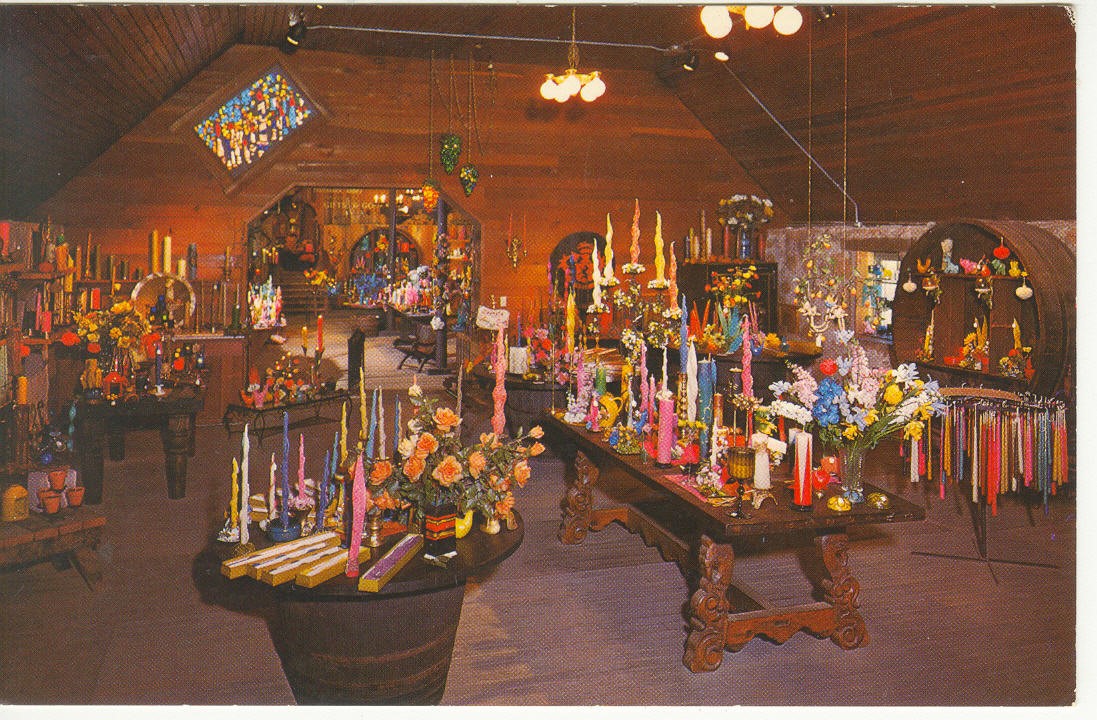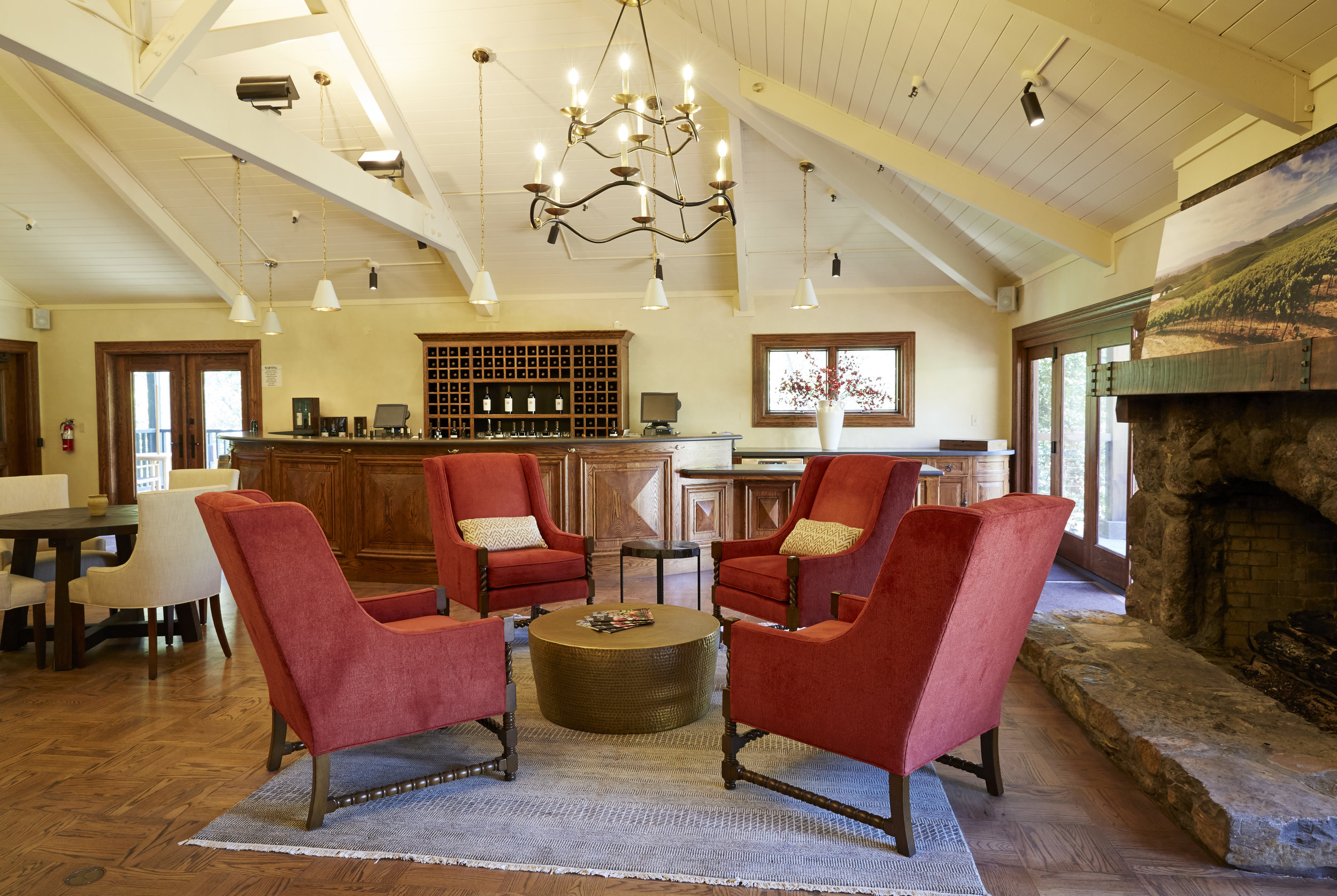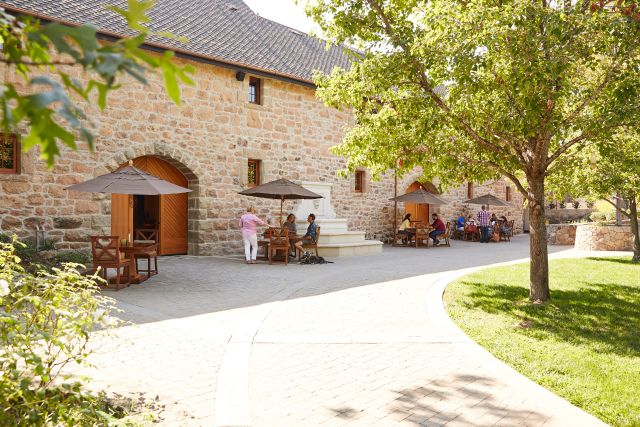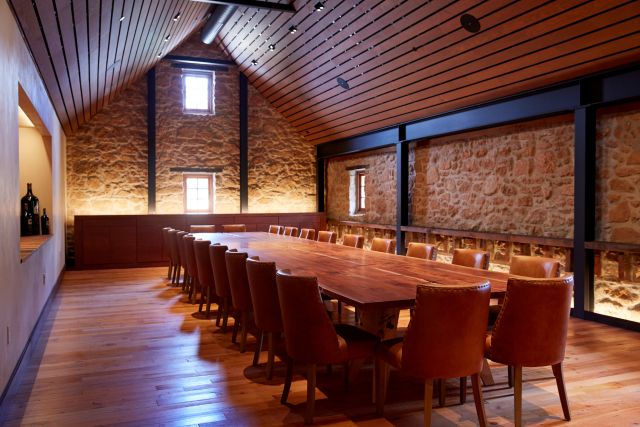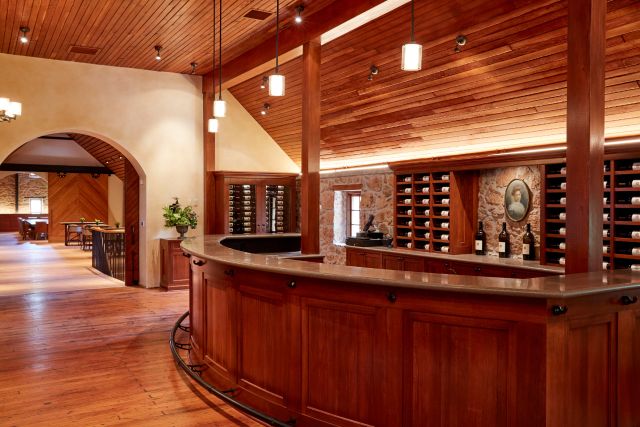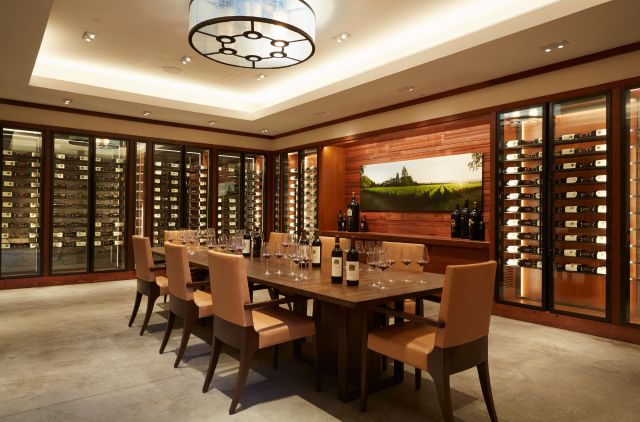1886
The winery dates back to the late‐1800’s and its founder, Josephine Tychson, is known as the first women winemaker in the Napa Valley. An intrepid Victorian widow who could often be spotted riding," Josephine Tychson built and operated the original redwood cellar on our estate, cultivated the land, and became the first female winemaker on record in Napa Valley.
1898
Antonio Forni, a good friend of Josephine’s, purchases the winery and renames it Lombarda Cellars after his birthplace in Italy. A year later, he constructs the still-standing historic stone winery using stones from nearby Glass Mountain.
1939
Three southern California businessmen purchase Lombarda Cellars, combining their names: Charles Freeman, Marquand Foster and Albert “Abbey” Ahern into Freemark Abbey.
1949
Freemark Abbey opens a “Sampling Room,” as tasting rooms were first called, making it one of the earliest wineries in Napa Valley to offer visitors sips of wine.
1960’s
During the mid-1960’s, the winery was non-operational until a group of seven business partners (Dick Heggie, Brad Webb, Bill Jaeger, Frank Laurie Wood, Jim Warren, Chuck Carpy and John Bryan) purchased and established the Freemark Abbey Winery in 1967, returning wine making to the historical stone building.
HISTORY OF USE
The permits and uses throughout the history of the property highlight the varied historical zoning of these parcels and the many uses that have been permitted to operate within them over time. Along with functioning as an agricultural operation that includes a winery (in operation prior to the approval of Napa County’s Winery Definition Ordinance in 1990), vineyards and tasting room, the uses listed below have also co-existed at the project site:
Commercial Retail (Wine sales, bakeries, antique shops, ice cream shops, candles, delicatessens)
Commercial Office
Commercial Catering Kitchen
Party & Event Space
Shipping Warehouse
Manufacturing (candle factory)
Brewery and brewpub restaurant
Restaurants and cocktail lounges
Motel
Art gallery
Corresponding with the blended uses and activities on the property, utilities, infrastructure, driveways and parking areas have all been shared between the various uses in the past and present. Freemark Abbey has operated as a mixed-use property regardless of its underlying zoning or land use. At its peak, the property had a two successful restaurants in operation while also supporting a fully occupied office building in conjunction with the winery, tasting room, commercial retail, a motel, and associated events.
Shortly after their purchase in 1967, the new owners partnered with developers to further improve the property and make Freemark Abbey a vibrant mixed-use commercial destination. It was at this time that the legendary Hurd Candle Factory and Abbey Restaurant were located within the Stone Building along with other retail shops and uses.
1970’s
In the early 1970’s, Napa County approved a use permit to establish a Master Development Plan for the Freemark Abbey Property, along with a new 60,000 gallon capacity winery. In 1976, a new commercial building with retail wine sales, a delicatessen, bakery and ice cream shop was approved and subsequently constructed.
1980’s
In the early 1980’s , a use permit was issued and construction commenced on a sewer line system to transport domestic and process waste from Freemark Abbey and Wine Country Inn to combined wastewater treatment ponds at Markham Winery. In 1981, permits were issued and construction commenced on the barrel and commercial office building. From 1985 to 1990, Knickerbocker’s Restaurant occupied the deli, bakery and ice cream shop building. During this time frame, the 10+ acre north parcel was rezoned by Napa County from Planned Development (PD) to a mix of Commercial Limited (CL) and Agricultural Watershed (AW).
1990’s
In 1990, Brava Terrace Restaurant opened and subsequently the county issued a use permit consistency determination for a restaurant use within the building. Brava Terrace continued to operate until 2001. Silverado Brewing Company began operation in the former Abbey Restaurant space located within the Stone Building in 1995 and continued until 2013.
2000’s
In 2006, the Jackson Family purchased Freemark Abbey out of bankruptcy from Legacy Partners.
2010’s
Permits were approved for a 1,200 sf retail wine shop in the Stone Building which opened in 2011. Additionally, use permits were issued for improvements to the existing winery, office building and stone building. In 2013, the Jackson Family purchased the mixed-use property south of Lodi Lane from the Alumbaugh family which included several residential units, a motel and a commercial building. In 2015, renovation was completed on the historical Stone Building and Two Birds/One Stone restaurant opened. In 2019, Two Birds/One Stone gave way to a new restaurant, Roadhouse 29, which is currently in operation.



